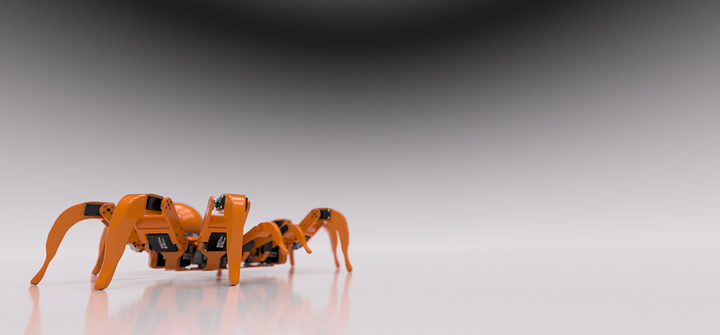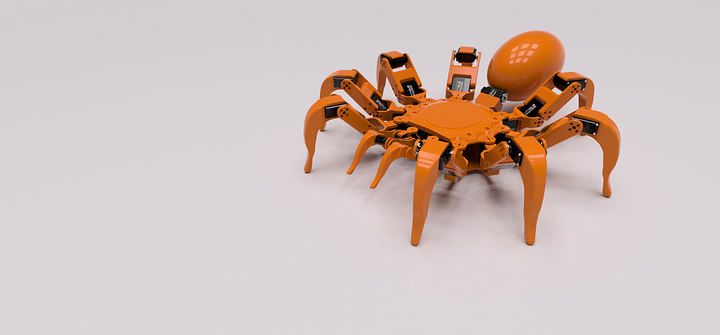I thought i should share my latest work in progress.
This is the Artus-X. Artus-X comes from the Latin translation of Ten Limbs
The A.r.t.u.s-X or Articulated Robotic Tarantula Universal Simulation 10
A tarantula has four pairs of legs and two additional pairs of appendages. Each leg has seven segments, which from the prosoma out, are: coxa, trochanter, femur, patella, tibia, tarsus and pretarsus.
In this article we will only be looking at the coxa, femur, tibia, tarsus/pretarsus as well as the fifth pair.
The fifth pair are the pedipalps, which aid in feeling, gripping prey.
The sixth pair of appendages (Not realised here)are the chelicerae and their attached fangs.
The tarantula leg oscillations are more loosely coupled to each other. The two sides
may maintain different rhythms. The pedipalps and even first legs may be slower than
the rest.
When walking, a tarantula’s first and third leg on one side move at the same time as the second and fourth legs on the other side of its body. The limb movements of many multilegged animals occur in metachronal sequences, often sequences running from posterior to anterior. Such sequences are not so conspicuous in animals with few legs. However, for the walking of certain insects with variable gaits it has been possible to produce a descriptive model based on metachronal rhythms with stepping pattern varying with frequency.
For simplicity
one can assume that legs on opposite sides of the animal always alternate and then make the following formulation for legs of one side. Number the legs 1, 2, 3, and 4, from front to back. Then the basic stepping sequence in the model is 4321. Again for simplicity, hold the interval between 4 and 3, 3 and 2, and 2 and 1 constant. Vary the repetition rate of the whole set.
The stepping sequences of these spiders are in fact fairly similar to those of most insects. Aside from the difference in number of legs, however, there is another significant difference. The legs do not necessarily step at exactly the same frequency so there are sometimes phase drifts between given legs even during steady locomotion. At first sight the majority of the observations do appear to fit the model, but with rather a lot of random variation.
At present the robot will have 24 HS705bb quarter scale servos for its 8 3dof limbs along with to other appendages called pedipalps. These will consist of 4dof each.
Running the famous phoenix code i have added the additional appendages and a couple of other features including a 2dof abdomen.
The code has been ported over to the Arduino Mega 2560 and also uses the SSC32-U servo board. At the moment i have it coded for the PS2 but later i would like to move it to RC.
I am currently in the production stage so i should soon have some assembly to show you.
A test leg has been printed at 15% infill as a prototype but i will be printing the legs and body at 50-75%.
Everything has been designed in fusion 360 and 3d printed on a Stratasys F170 3D Printer in ASA.
The body plate, along with the leg sections are rather large and so the body top plate has been printed in 4 parts and uses dove tail joints to lock it together.
So far the body has taken a total of 36 hours to print. Only one half shown here.
As soon as i have more to show i will.
Questions welcome.


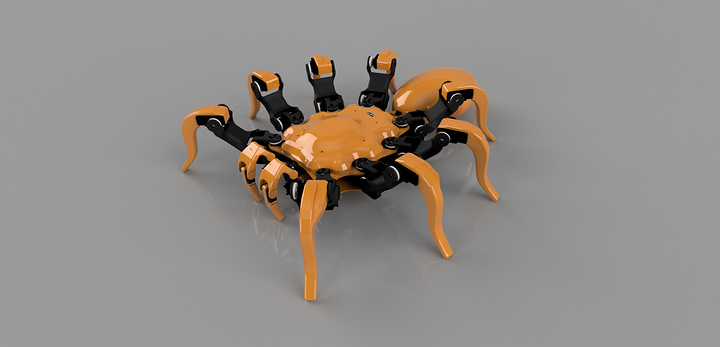
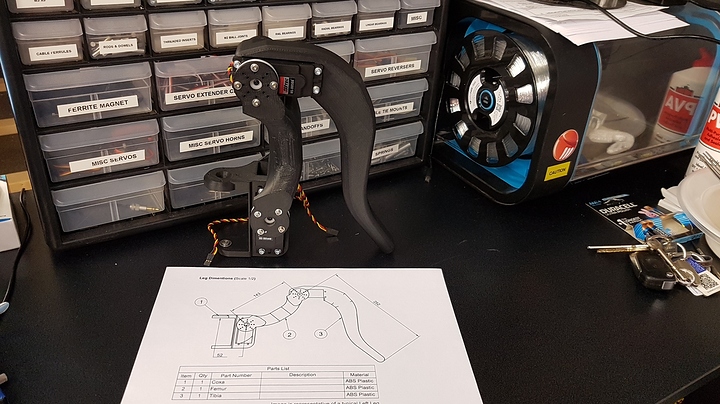
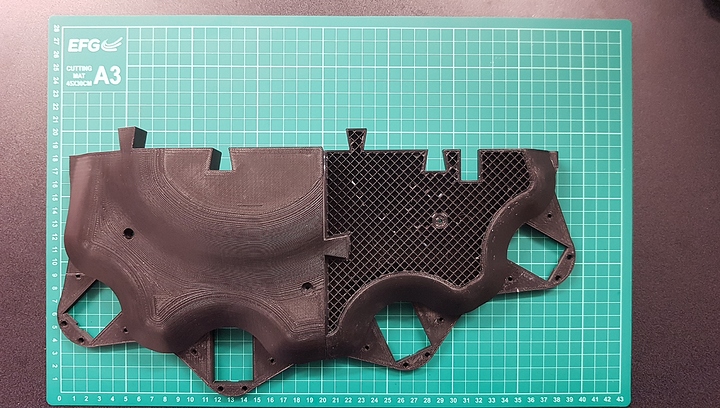
 But again… untested at this point.
But again… untested at this point.